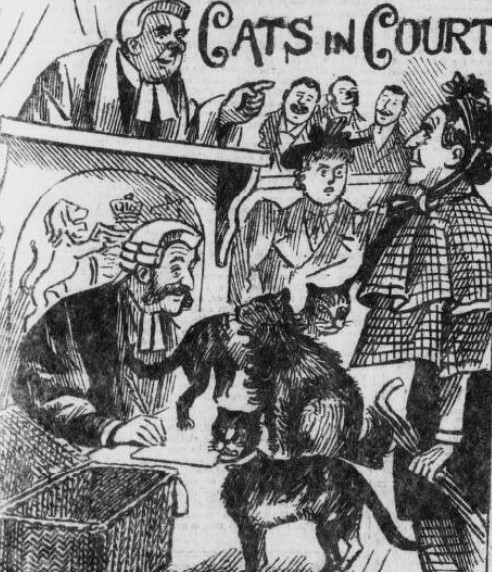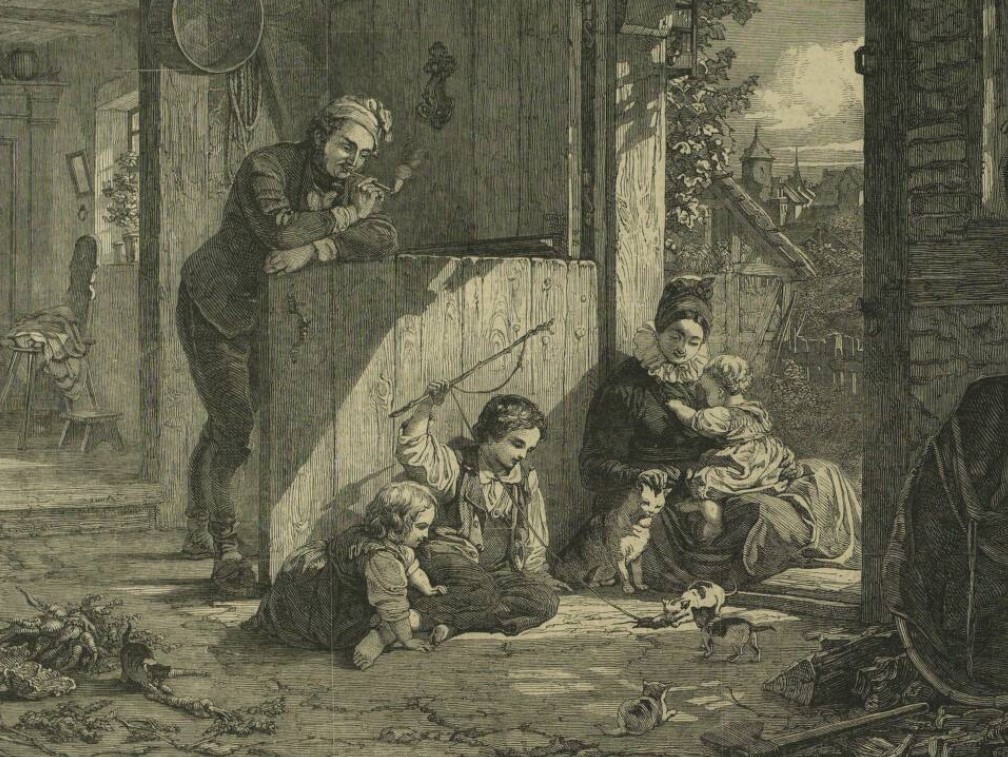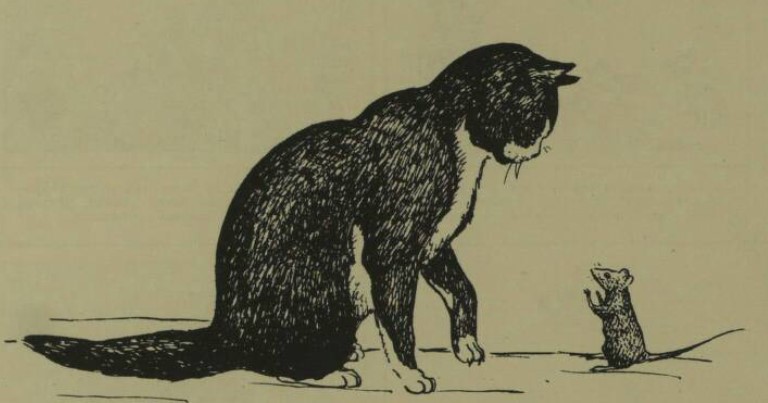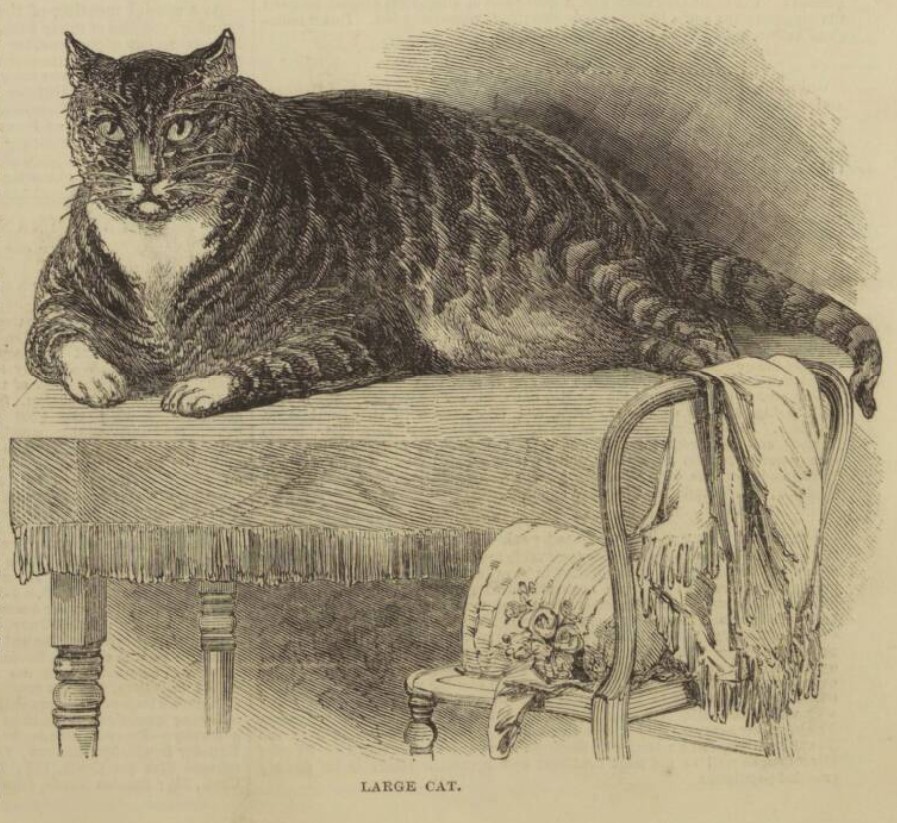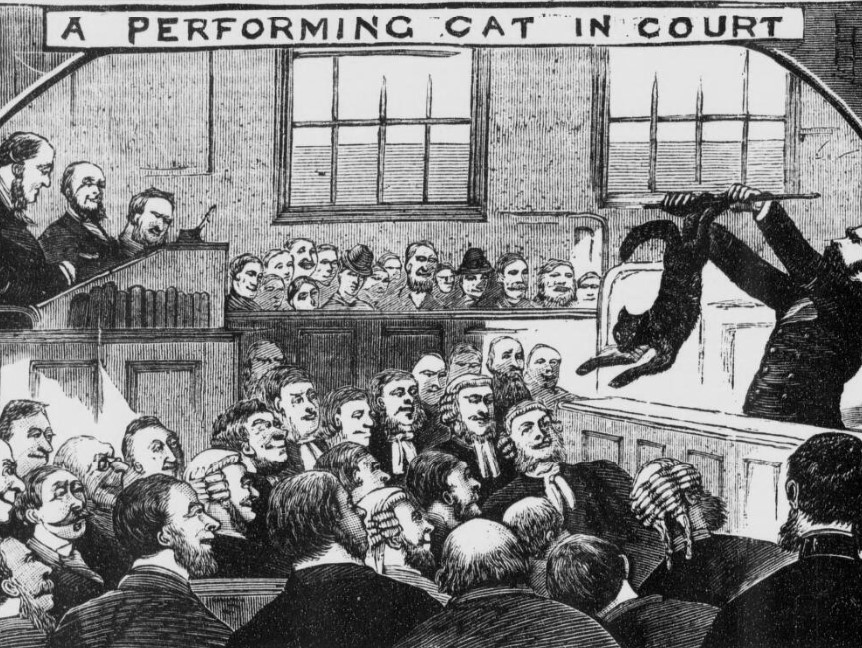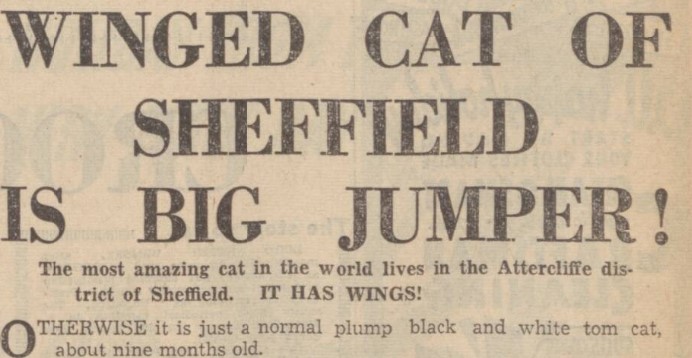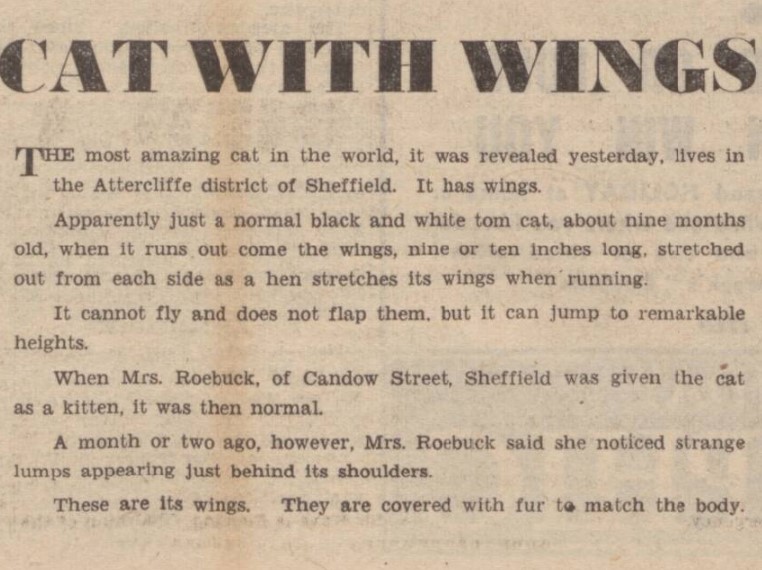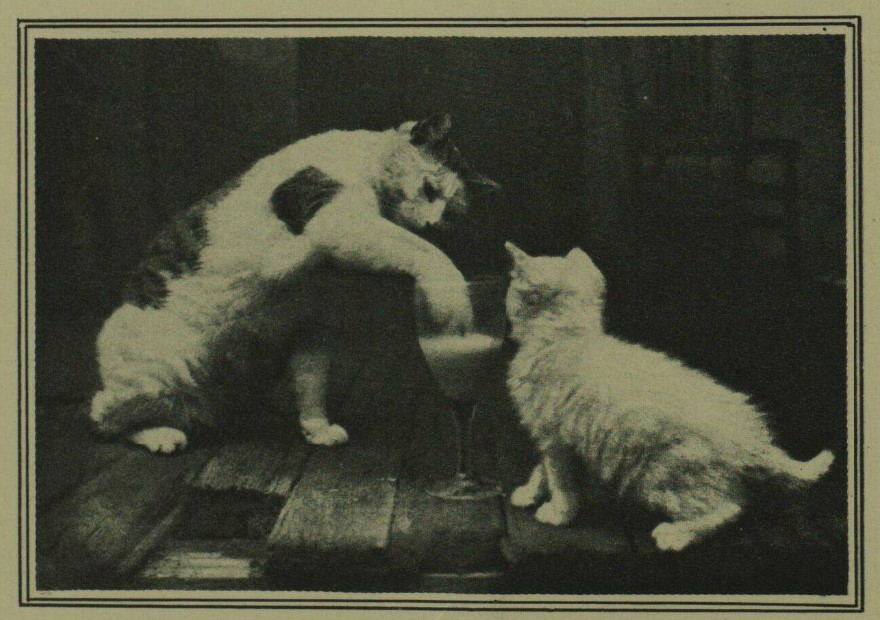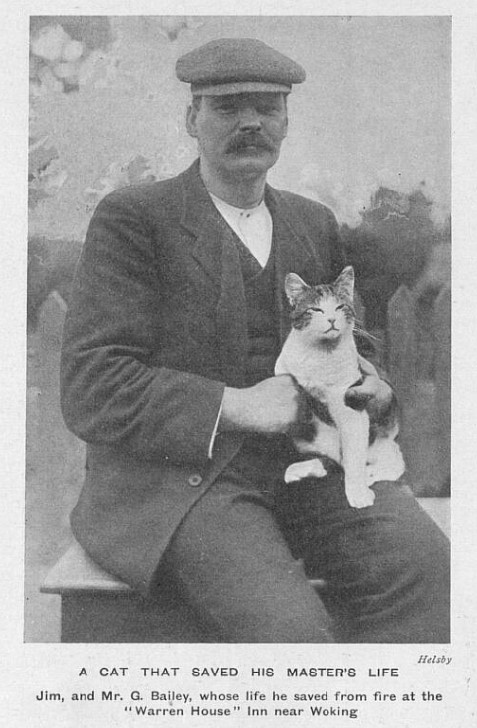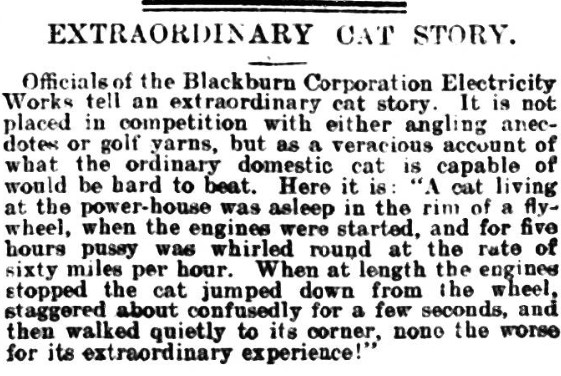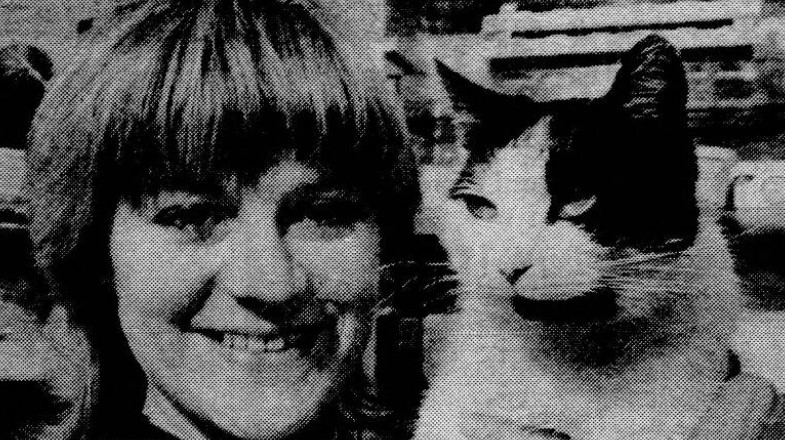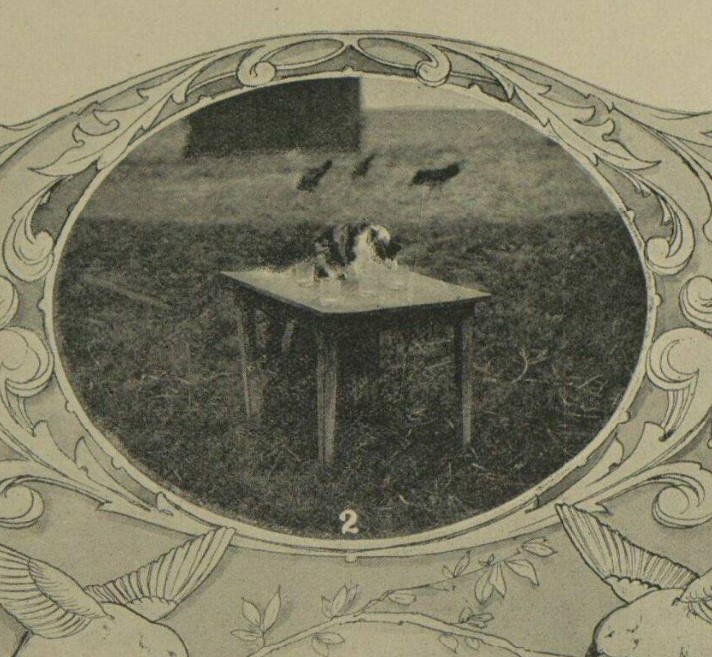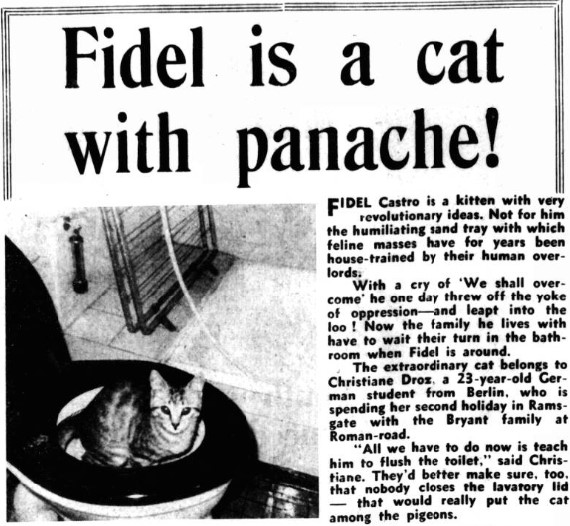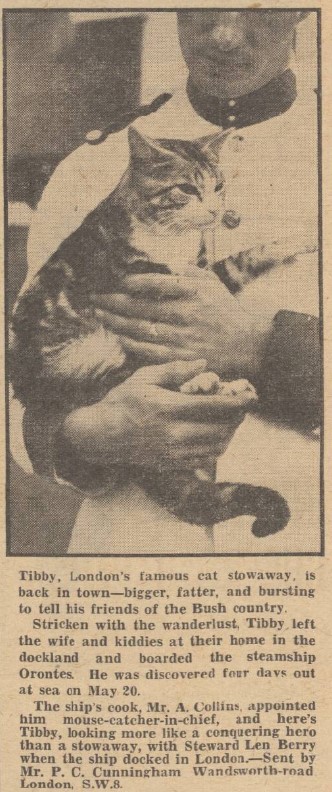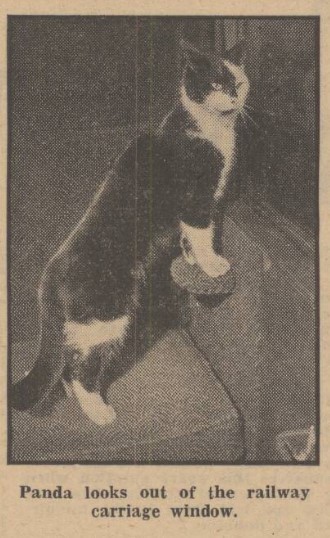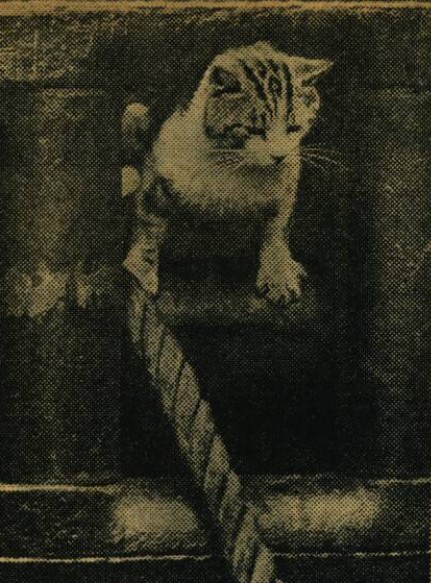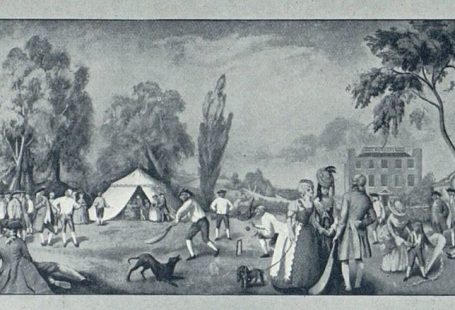Cats have been companions to humans for an estimated 10,000 years, and in this special blog, we present fourteen remarkable cat tales taken from the pages of our newspaper Archive. From felines with a predilection for travel, to heroic cats responsible for saving lives, as well as those who made use of all of their nine lives, we’ve scoured our collection to bring you some of the most extraordinary cat stories from history.
Register now and explore the Archive
1. The Cat and The Lark
Our first remarkable cat tale comes from London paper the Morning Post, from 1822. It was in the nineteenth century that cats became more popular as pets, and this particular article details ‘an extraordinary cat’ from Edinburgh.
This cat belonged to a shoemaker ‘in the south side of Edinburgh,’ who also kept a lark. One day, the shoemaker was cleaning the lark’s cage, when the bird flew away. The Morning Post describes how ‘the lark, being a favourite, its loss was much lamented.’
But then something remarkable happened. The newspaper details how, about an hour and a half after the lark had disappeared, ‘the cat belonging to the same person made its appearance with the lark in its mouth, which it held by the wings over the back, in such a manner that the bird had not received the least injury.’
The report adds how, after bringing the lark back and dropping it onto the floor, the cat ‘looked up to those who were observing her, and mewed, as if to attract attention to the capture.’ The lark was unscathed by its adventure, occupying ‘its wiry prison, with the same noisy cheerfulness as before its singular adventure.’
2. Cat and Mouse
Another remarkable anecdote regarding a feline’s friendship with another species was published by Lancashire-based newspaper the Accrington Observer and Times in October 1906. This piece revealed how ‘an old man named Richard Townsend, of 39, Fielding-street, Rishton, owns a cat that is suckling a mouse.’
The Accrington Observer and Times piece explained how Mr. Townsend’s two-year-old cat had recently given birth to kittens, which were ‘duly placed in an empty drawer, together with the mother.’
Now Mr. Townsend’s cat was something of a mouser, she ‘had previously, so he states, killed hundreds of mice.’ So it was only natural then when he was given a mouse that needed to be killed for a young dog, he brought the little creature to his cat. But what happened next shocked Mr. Townsend, as well as the Accrington Observer and Post, which described how:
She [the cat] took the mouse by the back and immediately carried it off to the two kittens in the drawer and lay down on it. This was, of course, thought unusual, but judge of the old man’s surprise when he took out the mouse with his hand, and on letting it go again it immediately returned to the cat. There the mouse still remains suckling along with the cat and the kittens.
Even more remarkably, since adopting the mouse, the cat had ‘killed and eaten’ other mice. She, however, persisted in caring for her chosen mouse, having been seen washing it. The unusual family was inspected by a ‘representative’ of the Accrington Observer and Times, who concluded, a little ominously, ‘whether pussy will in time turn round on her curious protégé or not remains to be seen.’
3. ‘Greatest Phenomenon of Nature’
Other cats made the newspapers because of their appearances. And one ‘extraordinary tortoiseshell tom cat’ was one such feline, who made the pages of the Morning Advertiser on 20 April 1835.
A short advert described how the cat, deemed to be the ‘greatest phenomenon of nature,’ weighed twelve pounds, and measured three feet two inches. Indeed, it was judged ‘to be the greatest curiosity ever shown to the public.’ This remarkable cat could be viewed at the Ship Tavern, Newgate Street, in the City of London.
4. ‘A Very Extraordinary Cat’
Decades later, Tynemouth paper the Shield’s Daily News was reporting on a ‘very extraordinary cat’ from Lewisham, London. The ‘remarkable’ nature of this cat also centred on its appearance, as the newspaper reports, for the feline was born with ‘hind legs only.’
‘A beautifully marked and affectionate creature,’ the female cat had adapted to ‘walk about in a perpendicular position,’ which the Shield’s Daily News compared to the gait of ‘the Australian kangaroo.’ The cat was known as Ipsey, and she had recently given birth to three kittens, who were ‘of perfect form.’
With a ‘singular appetite for cheese at meal times,’ Ipsey’s owner had ‘received many good offers from showmen for the animal, but he declines to part with it.’
5. The ‘Winged Cat’ of Sheffield
Perhaps one of the most remarkable cat tales in our Archive comes from Sheffield. On 21 July 1939 one of the newspapers from the Yorkshire city, the Sheffield Evening Telegraph, explained how ‘the most amazing cat in the world lives in the Attercliffe district of Sheffield.’ But why was this cat so remarkable? It had wings!
The paper described how the cat in question was just a ‘normal black and white tom cat,’ who was about nine months old. However:
…when it runs, out come the wings, nine or ten inches long, stretched as a hen will stretch its wings when running. It yawns and arches its back like an ordinary cat, and stretches its wings.
The Sheffield Evening Telegraph clarified for its readers that the cat could not fly, nor was it able to ‘flap its wings.’ It was, however, able to ‘jump to remarkable heights.’
The winged cat of Sheffield was owned by Mrs. M. Roebuck of Candow Street. She had bought the creature for her daughter as a kitten, and had not noticed anything unusual about the cat until a few months previously, when she noticed ‘strange lumps appearing just behind its shoulder.’
The cat had become known as the ‘Attercliffe wonder,’ with ‘dozens of relatives and friends’ of Mrs. M. Roebuck inspecting the feline. A reporter from the Sheffield Star also examined the cat, describing how:
When the wings are outstretched the cat has nearly a two-foot wingspan…The wings, attached to the body just behind the shoulder blades, are covered with fur to match the body. Normally they are held back along each side, the furry, pointed tips reaching to the top of the hind legs. Beneath the fur the wings feel solid with a bone structure.
6. ‘A Pernicious Habit’
Whether hoax or not, the winged cat of Sheffield caused something of a sensation, making the pages of the national press. Another remarkable cat tale to make the pages of the national press was that of a cat from a tavern in the Strand, whose ‘pernicious habit‘ was described by The Globe in August 1899.
Indeed, this tavern cat was ‘habitually in an intoxicated condition.’ The newspaper described how:
For some time past the cat has accustomed itself to watch the filling of the wine decanters in the bar, and to lap up any of the liquid which might have been spilled. As it frequently happens that a considerable quantity of wine is lost during the day, pussy has indulged in her pernicious habit to such an extent that towards evening she cannot walk without staggering.
The cat’s ‘favourite beverage’ was said to be port wine, but if that particular tipple was unavailable, the feline settled for ‘sips of whisky or any other spirit which comes her way.’
7. Cat Hero
From bad habits to heroic deeds, a ‘sagacious cat’ named Jim was pictured by The Tatler on 12 August 1903. Jim was featured by the publication because he enjoyed ‘the unusual distinction of having saved two lives.’
The Tatler tells the remarkable story of Jim’s heroic actions:
A short time ago a fire occurred during the night at the ‘Warren House’ Inn near Woking. The landlord, Mr. Bailey, was sleeping soundly when he was aroused by a curious feeling on his face and an equally curious noise; the curious feeling was the cat’s paw gently touching his cheek and the noise was a wailing mew.
When Mr. Bailey became aware of his surroundings, he saw that the house was on fire. Throwing on ‘some loose clothing he ran to his sister-in-law’s room and carried her downstairs into the road.’ By this point, the house ‘was so well alight that nothing could save it,’ and if it wasn’t for the cat, who always slept outside Mr. Bailey’s door, the fire would have undoubtedly claimed two lives that night.
8. The Cat and the Wheel
Whilst Jim made the papers for saving his master’s life, other cats hit the headlines for their remarkable survival abilities. One such cat was the feline who lived at the power house at Blackburn Corporation Electricity Works, Lancashire. A newspaper from many counties away, the Oxfordshire Weekly News, in May 1904 reported on this ‘extraordinary cat story,’ which runs as follows:
A cat living at the power-house was asleep in the rim of fly-wheel, when the engines were started, and for five hours pussy was whirled round at the rate of sixty miles per hour. When at length the engines stopped the cat jumped down from the wheel, staggered about confusedly for a few seconds, and then walked quietly to its corner, none the worse for its extraordinary experience!
Thankfully this cat was unharmed by its adventures, having perhaps used up one of its nine lives.
9. Surviving an ‘Icy Tomb’
Another survival cat tale hit the press some eighty years later in January 1986, when news of Victa, the ‘amazing cat,’ reached the pages of the Bristol Evening Post.
Victa, one of seven cats owned by the Wozniak family, had accidently been ‘trapped in a refrigerator outside her home in Innox Road, Trowbridge’ for seven hours. Her owner, 22-year-old Dorothy Wozniak, had found poor Victa, who was ‘as stiff as a board…with her tongue hanging out.’ Dorothy was sure she must be dead, but rushed the feline to the vet.
Veterinary surgeon Mr. Dennis Archer subsequently told the Bristol Evening Post:
She was in a very deep coma, and I couldn’t hear a heartbeat or detect a temperature when she came in. It was one of the worst cases of hypothermia that I have seen, and I have been in veterinary practice since 1945. I was amazed when she came out of it and lapped up a saucer of milk.
Thankfully Victa was ‘on the way to making a full recovery after coming within a whisker of losing all her nine lives at a stroke.’
10. ‘The Cat With A Sense of Colour’
From remarkable cat tales of survival, to remarkable cat tales of skill. In November 1907 the Illustrated London News published some ‘curious proofs‘ that demonstrated how animals were capable of reasoning. One example included a ‘cat with a sense of colour.’
Now this cat, according to the publication, was ‘accustomed to drink out of a certain glass.’ When ‘other glasses of the same shape but of different colours were laid down before it,’ the ‘cat chose immediately the one with which it was familiar.’ This demonstrated, therefore, that the cat was able to identify which glass was theirs from colour alone.
11. A Kitten With ‘Revolutionary Ideas’
Another cat with a slightly more questionable skill was featured by local paper the East Kent Times and Mail on 2 October 1970, under the headline ‘Fidel is a cat with panache.’
Named after Cuban leader Fidel Castro (or should that have been Fidel Cat-ro?), Fidel was an ‘extraordinary cat‘ who belonged to 23-year-old German student Christiane Droz, who hailed from Berlin, but was staying with the Bryant family in Ramsgate. But what was so extraordinary about Fidel?
The East Kent Times and Mail described for its readers how:
Fidel Castro is a kitten with very revolutionary ideas. Not for him the humiliating sand tray with which feline masses have for years been house-trained by their human overlords. With a cry of ‘We shall overcome’ he one day threw off the yoke of oppression – and leapt into the loo! Now the family he lives with have to wait their turn in the bathroom when Fidel is around.
Christiane commented in relation to her pioneering feline, ‘All we have to now is teach him to flush the toilet,’ whilst the newspaper observed how the Ramsgate family ‘better make sure […] that nobody closes the lavatory lid – that would really put the cat among the pigeons.’
12. Stowaway Cat
In December 1935 the Derby Daily Telegraph reported on a movement of a different kind, that of a ‘venturesome‘ feline who ‘twice boarded the same Derby Corporation trolley ‘bus at the Browning-street terminus, was twice carried to town and back to Browning-street, and was twice removed by the conductor.’
Third time was the charm for this cat, for no sooner had the bus left the ‘terminus than the conductor again discovered the same sleek stowaway, and once again the cat was carried to and from town.’
The Derby Daily Telegraph observed how the cat’s persistence signalled an ‘evident relish for modern travel.’
13. The Railway Travelling Cat
Another remarkable cat tale of travelling was reported on by national newspaper the Daily Mirror in May 1941, and featured Panda, the ‘black and white pet cat of Miss Alice Edmond.’ Indeed, the paper dubbed Panda as ‘probably England’s most widely travelled cat.’
This was because Panda accompanied his owner, schoolteacher Alice Edmond, on her train journey from her home near Woodborough in Wiltshire, to her place of work, a school in Newbury, Berkshire. Sometimes, Alice did not have a say on whether her pet went with her, as Panda would follow her if she left him behind at home.
The Daily Mirror describes how:
Getting ready for a journey is his star turn. He’ll carry his own rug downstairs to be packed and sit on his mistress’s suitcase until it is time to leave. He wears a collar and lead and will follow like a dog. Stationmasters and porters all know him, and once on the train Panda is sure to find a corner seat where he sits up and looks out of the window.
Alice Edmond’s sister was interviewed for the piece, saying:
Panda is a most amazing cat. Almost human. He once followed my sister to school, but he must have been disappointed when he found there wasn’t a journey at the other end. He didn’t stay and he never followed her there again.
14. ‘The Amazing Jumping Cat’
The appropriately named well-travelled Columbus the cat rounds off our list of remarkable cat tales from the Archive, although we are sure there are many such tales to be found in our newspaper collection. In June 1967 the Daily Mirror reported on the ‘amazing jumping cat’ Columbus, who used to travel on London’s Woolwich Ferry.
The piece described how:
He would startle passengers with his amazing leaps from ship to shore…Sometimes his agility failed to match his confidence. And ferry men would cross off another of his nine lives as they fished him out from the Thames. Columbus, a ginger Tom, would shrug off the loss, nip ashore for a swift food-finding expedition, and be back for the next river crossing, the next fantastic leap.
Such was Columbus’s remarkable daily routine. However, Columbus had not been seen for a few days, the ‘river men [having] posted him missing, believed dead.’ One of the men told the Daily Mirror how Columbus had ‘been away too long to be on the prowl,’ leaving the paper to conclude that he ‘probably took one jump too many and ran out of lives.’
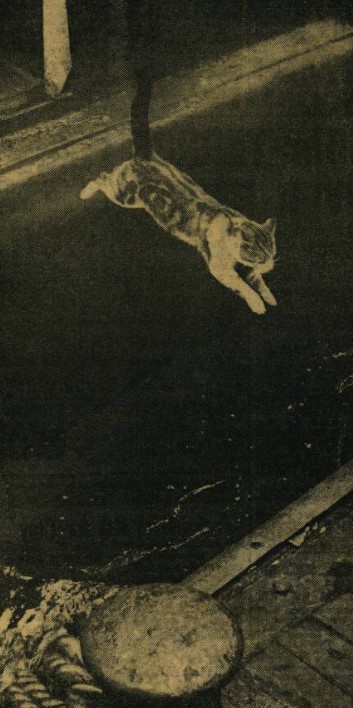
We hope that Columbus did not meet such a watery fate, although his antics are enough to secure him a place in our list of remarkable cats from our Archive. Can you discover any more remarkable tales in our newspapers? Begin your journey into the past with us today.


